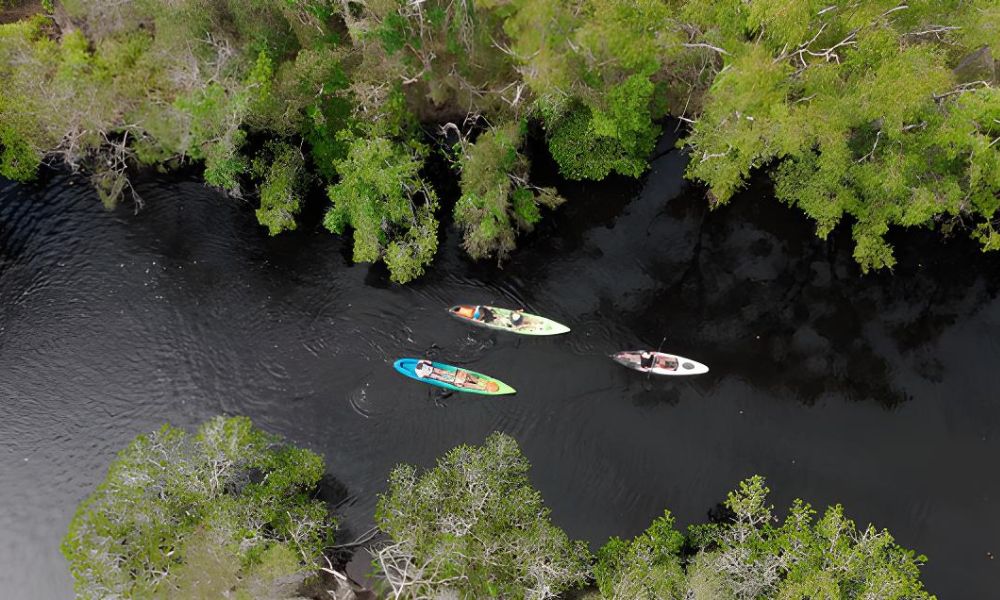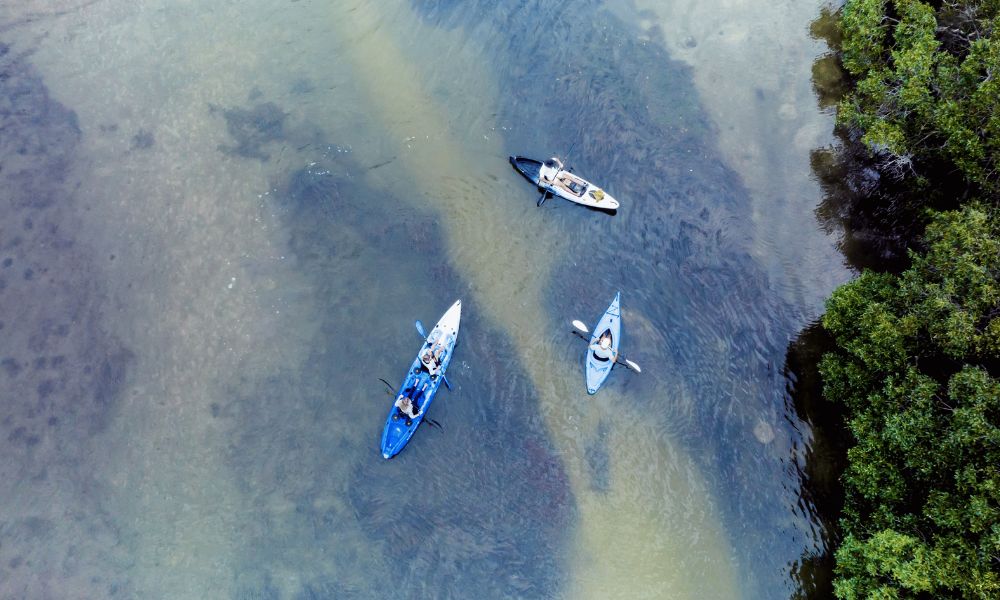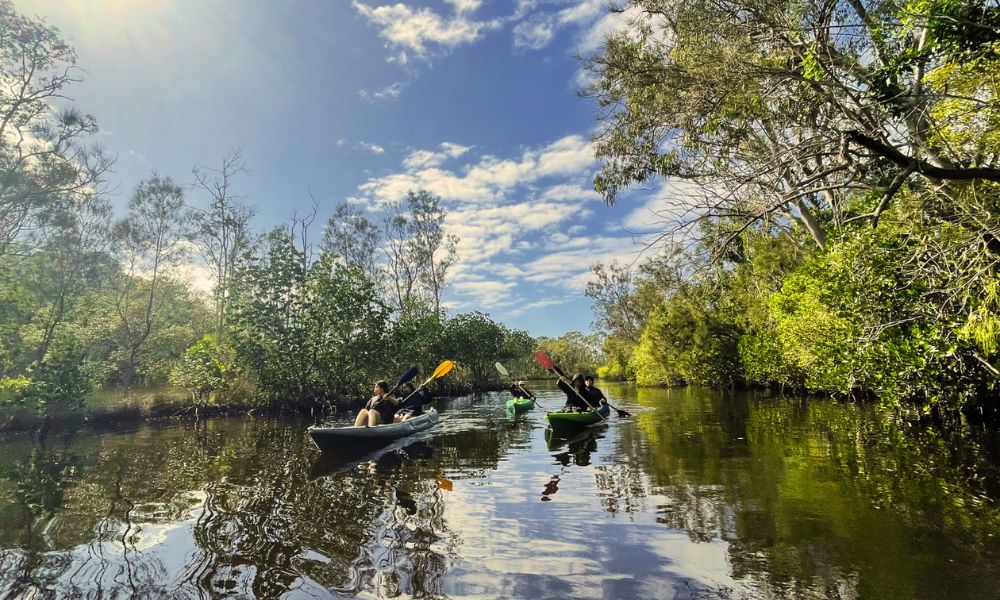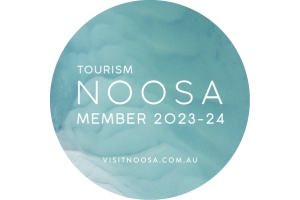Understanding the Noosa Everglades System
Is the Noosa River Catchment an Everglades System — And The Only Other One in the World?
It’s a big call, widely made by tourism bodies and tour operators alike — and worth understanding properly. As eco-tourism operators, we wanted to understand this deeply. Despite the well-known “only two Everglades systems on Earth” statement appearing widely across tourism and media, the underlying reasoning is rarely explained.


The short answer:
Yes — when assessed against the scientific criteria that define the Florida Everglades (the world’s only formally recognised Everglades ecosystem), the Noosa River catchment aligns with those criteria more closely than almost any other wetland system globally.
This is why Noosa has long been referred to as one of only two Everglades-type systems in the world — and why that comparison is reasonable when the full catchment is considered.
To understand this properly, we first need to look at what an Everglades system actually is………
What Defines an Everglades System?
The Florida Everglades is the only ecosystem in the world formally and universally described as “the Everglades” and is therefore the benchmark for any Everglades-type comparison.
Across scientific and government literature (National Park Service, U.S. Environmental Protection Agency, South Florida Water Management District, National Research Council), the Everglades is defined not by a single place, but by three features:
✔ 1. Catchment-Scale Hydrology
The Florida Everglades is a vast low-gradient wetland system where shallow sheet-flow historically moved from the Kissimmee Chain of Lakes → through Lake Okeechobee → down the marshes, mangroves, and estuaries → into Florida Bay.
It is a whole-of-catchment system, not a single narrow section.
✔ 2. Multiple Connected Habitat Zones
The Everglades includes a mosaic of wetland and coastal environments functioning as one system:
- headwater lakes
- freshwater marshes
- sloughs
- sawgrass plains
- hardwood hammocks
- mangrove wetlands
- brackish transitional zones
- saline coastal bays
No single environment defines the Everglades — its identity lies in the combination, and in the connected journey from freshwater to the sea.
✔ 3. A Freshwater → Brackish → Saline Continuum
Both the NPS and EPA explicitly include:
- freshwater interior Everglades
- coastal mangrove estuaries
- the brackish and saline waters of Florida Bay
All as core components of the Everglades ecosystem.
A system missing any part of this continuum cannot be considered an Everglades-type analogue.
✔ Outcome: An Everglades Is a Whole Catchment
A true Everglades-type system must be:
- hydrologically connected
- ecologically diverse
- spanning fresh → brackish → saline waters
- functioning as one wetland–estuary–bay continuum
This is the scientific definition used by the U.S. NPS, SFWMD, and the National Research Council in their definitions of the Florida Everglades System


Does the Noosa River Catchment Meet This Definition?
Yes — and Queensland government documents explicitly describe it in this whole-of-system way.
Queensland’s Noosa River Catchment Story (Department of Environment & Science) explains:
“The Noosa River flows through and/or receives water from the lakes of Como, Cooloola, Cootharaba, Cooroibah, Doonella and Weyba … before discharging into the Noosa estuary and Laguna Bay.”
This is a continuous headwaters → lakes → wetlands → estuary → bay sequence — the same structural pattern as the Florida Everglades.
✔ A. Catchment-Scale Hydrology
The Noosa River flows in a predictable chain:
headwater lakes → freshwater wetlands → transitional lakes → brackish lakes → mangroves → tidal estuary → coastal receiving waters
This mirrors the Everglades hydrology from headwaters → marshes → mangroves → Florida Bay.
✔ B. A Diversity of Connected Habitats (Strong Parallels to Florida)
Upper Noosa River → Florida’s Freshwater Sloughs
- slow, tannin-rich flow
- minimal gradient
- peat wetlands
- reflective slough-like channels
Lakes Como & Cooloola → Florida’s Headwater Lakes (Kissimmee/Okeechobee analogue)
- headwater storage
- nutrient and tannin regulation
- flow governance
Lake Cootharaba → Transitional Shallow Basins
- large open basin
- hydrological buffering
- mixing zone
Lake Cooroibah → Brackish Transition Zone
Comparable to Florida’s coastal transitional wetlands (e.g., Ten Thousand Islands).
Lake Weyba → Coastal Embayment (Florida Bay analogue)
- shallow basin
- freshwater + tidal mixing
- seagrass and mangroves
- brackish–saline transition
Lower Noosa Estuary → Mangrove and Estuarine Everglades
- mangroves
- nursery habitats
- sediment/tannin transport
- salt–freshwater interface processes
All are recognised Everglades components.
✔ C. Full Freshwater → Brackish → Marine Gradient
The Noosa system includes:
- freshwater lakes
- acidic wallum wetlands
- brackish transitional lakes
- saline embayments
- tidal estuary
- coastal receiving waters
This matches the essential Everglades pattern.
✔ D. Landscape Diversity Equivalent to Florida’s
Queensland DES documents identify the Noosa catchment as containing a highly diverse and interconnected wetland–lake–mangrove–estuarine system.


So Does the Noosa River Catchment Meet the Scientific Definition of an Everglades-Type System?
Yes.
When viewed as a whole system, the Noosa River catchment contains:
- headwater lakes
- freshwater marshes
- transitional wetlands
- brackish lakes
- mangrove estuaries
- coastal receiving waters
- a complete freshwater → brackish → saline continuum
- low-gradient catchment hydrology
- ecosystem diversity equivalent to the Florida Everglades
No single subsection of system can reflect this whole structure of an Everglade, but the full 85,000ha catchment accurately does which is why the catchment can confidently be described as an Everglades system and is frequently referred to and marketed as “One of only two Everglades systems in the world.”
A Note on Visitor Experiences – An Everglades System is by definition expansive and varied, one Everglades experience is not representative of all Everglades Experiences!
Different areas of the catchment offer different landscapes, access styles, and recreational opportunities. Some sections are remote and iconic, others are accessible and diverse, each with their own wonderful and unique aspects — but all are legitimate components of an Everglades-type system.
Guests can explore various sections via equipment hire, guided tours, or permitted self-guided access. Every part of the system reveals its own unique and beautiful features.
What lakes and waterways are part of the system?
As an informal name coined by tourism operators, the exact boundaries of the “Noosa Everglades System” are also informal. The origins of the name are vague but is thought the term ‘Everglade’ was first used to describe the extensive network of rivers and lakes in and around Noosa by tour guides. The Noosa Everglades remains undefined officially; however the waterway system itself is well understood and well defined. It includes:
- Lake Weyba
- Lake Doonella
- Weyba Creek & Noosa Sound waterways
- Lake Cooroibah
- Lake Cootharaba
- Upper Noosa River (the iconic mirrored section)
- Surrounding creeks and wetlands feeding the upper catchment
In simple terms, water from Lake Weyba all the way to the upper Noosa River is all part of the same catchment that underpins what is commonly referred to as the Noosa Everglades System.
Understanding the system
Known for — among many other things — its incredible reflections and amazing wildlife, the Noosa Everglades system forms a 65 km–long area of narrow waterways, tea-tree-stained creeks, shallow lakes, and lush wetlands, all hydrologically linked as the Noosa River catchment.
As no official definition of areas within the system are defined, we describe the key lakes as “Gateways” into different parts of this branching ecosystem, this may not reflect other naming conventions so should just be read in context of our explanation:
- Southern Gateway: Lake Weyba & Doonella — home to vibrant wetland habitats and an important juvenile stingray nursery.
- Central Region: Lake Cooroibah and the flowing upper Noosa River.
- Northern Region: Lake Cootharaba leading into the remote, iconic mirrored wetlands inside Great Sandy National Park.
On our tours, we use Lake Weyba as our Gateway into the southern end of the system — a tranquil, wildlife-rich area that while closest to Noosa few visitors still ever get to experience.


Where We Operate Within the Noosa Everglades System?
We operate within the southern reaches of the Noosa River Catchment, just minutes from Noosa in Lake Weyba and its surrounding waterways — the expansive, interconnected wetland system that forms the lower gateway to what is widely described as one of the world’s only two Everglades-type environments.
This catchment extends from the Cooloola sandmass and upper Noosa River, through remote lakes and mirrored tea-tree waterways, and into the Lake Weyba–Doonella–Noosa estuarine complex. It is a single, unified wetland system expressed through many different landscapes, each shaped by the same sand-based, nutrient-poor geology that defines Everglades-type environments globally.
There is a wide range of adventure, eco-tourism and visitation options and experiences available throughout this vast and complex wetland from the northern end of the system above Lake Cootharaba, known as the Narrows, and the River of Mirrors, down to the southern areas, especially the branching waterways surrounding Lake Weyba where our tours operate.
These environments are all a part of the broader Everglades-type system — although the southern end our guests are introduced to is formed where freshwater, brackish water, and tidal influences meet.
The landscapes we paddle through include:
- Calm tannin channels producing the classic Everglades-style reflections
- A stingray nursery zone, where juvenile rays thrive in clear, sheltered shallows
- Shallow sand flats that glow with shifting tidal colours
- Mangrove forests and saltmarsh, crucial coastal habitats
- Seagrass meadows supporting turtles, rays, fish, and wading birds
- Wallum heathland edges, showcasing the catchment’s shared sand base
- Quiet freshwater–saltwater transitions rich in wildlife activity
These southern environment offer a different but complementary way to experience the Everglades system — one that is highly accessible, close to Noosa, and well-suited to visitors looking for shorter, physically less demanding kayaking options without sacrificing natural beauty or ecological richness.
In Lake Wayba, our guests can enjoy:
- Short, gentle paddles ideal for beginners, families, and relaxed explorers
- A compact diversity of habitats, easily experienced within a single tour
- Seasonal wildlife encounters, from rays to herons and egrets
- Sheltered, low-traffic waterways perfect for calm, nature-based paddling
- A clear sense of how the entire system connects from south to north
Each section of this wonderous system — northern, central, and southern — has its own unique identity, its own story, and its own ecological role.
That’s precisely what makes an Everglades-type system so extraordinary:
a journey through great variety, changing environments, and shifting expressions of the same remarkable wetland landscape.
Our role is to help guests appreciate the beauty, calm, and natural significance of the southern reaches, which remain an essential and fascinating part of the Noosa Everglades-type system.
Through our kayak tours, visitors come away with a deeper understanding that the Noosa River Catchment is not a single narrow channel, but a living, interconnected wetland filled with places worth exploring — each different, each valuable, and each contributing to the whole.

Award Winning Tours
As the honored recipients of Airbnb’s ‘Most Magical Experience’ and TripAdvisor’s ‘Travelers’ Choice Award,’ alongside a multitude of glowing 5-star reviews, you can trust that an extraordinary adventure awaits you.
PERFECT FOR KIDS
AND FAMILIES
All our kayak adventures are conducted in shallow waters on super-stable double kayaks, with infant seats available.
We offer a diverse array of family-friendly bike adventures that can be tailored to families with young children. Please contact us for details as not all our bike tours can be made child friendly.
Easy Access, Minutes from Noosa
Embark on our serene kayak adventures, set in the tranquil shallow waters just minutes from the heart of Noosa, and our bike tours departing from Noosaville. These accessible and unique adventures offer an extraordinary opportunity to uncover some of Noosa’s best-kept secrets.
By Earth and Ocean offers complimentary transfers from your Noosa accommodation on selected tours and days (subject to availability)





